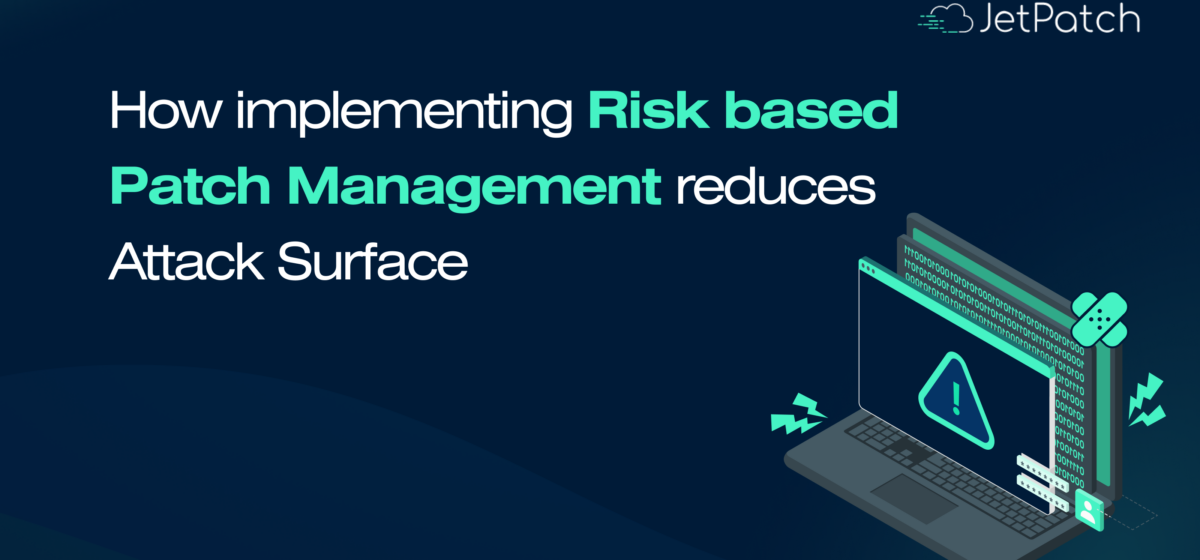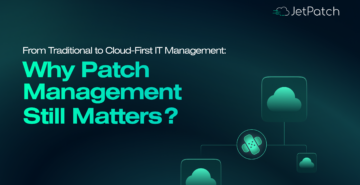What is risk based Patch Management?
Risk-based patch management focuses on addressing the vulnerabilities that pose the greatest threat to your organization. Unlike traditional methods that rely solely on the severity of a vulnerability or generic scoring systems like CVSS, this approach considers real-world factors to determine which vulnerabilities need immediate attention.
For instance, it prioritizes patches for vulnerabilities that are currently being exploited by attackers. By concentrating on the most dangerous vulnerabilities first, security teams can allocate their resources more effectively, ensuring that the most critical threats are mitigated. In essence, risk-based patch management is about proactively protecting your organization by addressing the vulnerabilities that matter most.
Limitations of Traditional Approaches
- Static Severity Ratings: Traditional methods rely on vendor severity ratings, which often lack consistency across vendors. This can leave critical vulnerabilities under-prioritized.
- Over-Reliance on CVSS Scores: CVSS scores don’t always reflect real-world risk. Vulnerabilities with moderate scores can be actively exploited, posing serious threats.
- Lack of Real-Time Data: Without real-time threat intelligence, traditional methods can’t keep pace with emerging threats, leaving your organization exposed.
- Inadequate Contextual Analysis: Traditional methods often miss the specific impact a vulnerability could have on your environment, leading to misaligned patching priorities.
How to spot Gaps:
- Are you just following static metrics like CVSS scores without considering the bigger picture?
- Are you using real-time threat intelligence to spot vulnerabilities that are actively being exploited?
- Are you taking into account the unique risks that your organization might face?
Common Pitfalls in typical Patch Prioritization
Traditional methods of deciding which software patches to apply often fall short because they can’t keep up with the fast pace of modern cyber threats.
These older methods typically rely on things like severity ratings and CVSS scores to determine which vulnerabilities to patch first. However, these scores can be misleading and don’t always reflect the true danger a vulnerability might pose.
- Overlooking Actively Exploited Vulnerabilities
One major issue with standard patch management is that it can miss vulnerabilities that hackers are already actively exploiting. Take the Fortinet SSL-VPN Zero-Day vulnerability (CVE-2023-27997) as an example. This vulnerability was quickly exploited by attackers in June 2023.
Hackers were able to remotely execute code without needing authentication, which led to several breaches. Unfortunately, many organizations didn’t patch this vulnerability in time, which shows just how crucial it is to focus on vulnerabilities that are being actively exploited. These are the most immediate and severe threats.
2. CVSS Shortcomings
CVSS scores are meant to give a standardized measure of a vulnerability’s severity. But in real life, these scores can fall short. They don’t always consider how easily a vulnerability can be exploited in a specific environment or the potential damage it could cause if it’s exploited.
For instance, the Fortinet SSL-VPN vulnerability had a relatively high CVSS score, but the actual impact was even greater, especially for organizations that rely heavily on VPNs for secure remote access. If you only rely on CVSS scores without considering the specific context, you might end up underestimating the urgency of certain patches, leaving your systems vulnerable.
3. Vendor Severity Inconsistencies
Another problem is the inconsistency in how different vendors rate the severity of vulnerabilities. Each vendor has its own criteria, so what one company calls “Important,” another might label as “Critical.” For example, a vulnerability might be marked as “Important” by one vendor, but in reality, it could be actively exploited and pose a serious threat.
This inconsistency can lead to poor prioritization, where some critical vulnerabilities don’t get the attention they need. By adopting a risk-based approach, organizations can cut through these inconsistencies and focus on the vulnerabilities that truly pose the greatest risk, no matter what the vendor says.
Is the CISA KEV Catalog enough on its own
The CISA Known Exploited Vulnerabilities (KEV) catalog is a great tool to start with when you need to identify vulnerabilities that need urgent attention. It gives you a list of vulnerabilities that are actively being exploited, which makes it very useful for prioritizing which ones to fix first. However, relying solely on the KEV catalog isn’t enough for a solid patch management strategy.
You should also use other resources, like threat intelligence feeds, which keep you updated on new and emerging threats in real time. Additionally, using proprietary scoring systems can help you assess risks more accurately by considering your organization’s specific environment and challenges.
It’s also essential to regularly conduct vulnerability assessments. These help you stay on top of any new vulnerabilities and ensure your patch management efforts are always aligned with the latest threat landscape.
By combining the KEV catalog with these additional tools and practices, you can build a more comprehensive risk-based patch management strategy. This approach ensures that you’re not just addressing the known vulnerabilities but also staying ahead of potential new threats.
Why Prioritize active exploits over other Vulnerabilities
Prioritizing vulnerabilities that are actively exploited is essential for several reasons. First, these are the vulnerabilities that attackers are currently using in real-world attacks, making them the most immediate threat to your organization. By focusing on these vulnerabilities, security teams can significantly reduce their attack surface and prevent breaches that could result in substantial damage.
If you compare different methods of prioritization, it becomes clear that a risk-based approach is much more effective than traditional methods. Traditional methods often rely on fixed metrics, like CVSS scores, which don’t always reflect the current threat landscape. They might miss the fact that a particular vulnerability is actively being eyed by hackers right now.
In contrast, risk-based patch management uses up-to-date threat intelligence—like data on the Fortinet SSL-VPN Zero-Day exploit—to identify and focus on vulnerabilities that pose the highest risk.
In fact, studies show that companies using a risk-based patch management approach are better at stopping attacks than those using traditional methods. That’s because this approach makes sure that the most dangerous vulnerabilities are fixed quickly and efficiently.
How to effectively Prioritize:
- Use live data feeds to pinpoint vulnerabilities that are currently being exploited in the wild.
- Implement Threat intelligence into your patch management workflow, helping you focus on vulnerabilities that attackers are actively targeting.
- Understand how vulnerabilities impact your specific environment. JetPatch helps assess these risks in context, so you prioritize effectively.
- Speed is critical. Automates the deployment of patches for high-risk vulnerabilities, reducing the window of exposure.
- Continuous Monitor and adjust your patch management strategy based on the latest intelligence.
Why you must adopt Risk-Based Patch Management
Sophisticated cyber attacks can exploit even the smallest gaps in an organization’s security posture. In this environment, adopting risk-based vulnerability management by leveraging patching is crucial.
The benefits of this approach are clear:
- Efficient Resource Allocation: By focusing on the vulnerabilities that pose the greatest risk, organizations can allocate their resources more effectively, ensuring that critical threats are addressed first.
- Enhanced Security Posture: Risk-based vulnerability management aligns your patching strategy with the actual threat landscape, making your organization more resilient to attacks.
- Proactive Risk Mitigation: Continuous monitoring and reassessment of vulnerabilities ensure that your patching efforts remain relevant as new threats emerge.
With cyber threats becoming more sophisticated and frequent, the time to adopt a risk-based approach is now. By doing so, organizations can stay ahead of attackers.
Conclusion
Move beyond reactive patching and integrate a risk-based vulnerability management strategy. The key benefits of adopting a risk-based patch management strategy include more efficient resource allocation, an enhanced security posture, and proactive risk mitigation.
For a deeper dive into how to transition from manual patching to an automated and intelligent remediation process, download our eBook on how to Shift From Manual Software Patching to an Automated Vulnerability Remediation Ecosystem Play.



